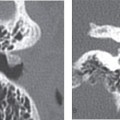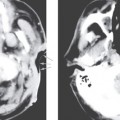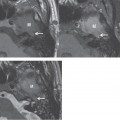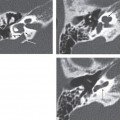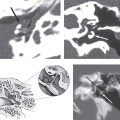CHAPTER 9 Exostoses
Epidemiology
External auditory canal (EAC) exostoses, also called “surfer’s ear” or “cold-water ear,” are benign, sessile, multinodular bony masses arising deep in the EAC. They are found commonly in surfers or people with prolonged exposure to cold water. They are known to occur exclusively in humans, and one study found a prevalence rate of 73% in surfers. Prolonged physical, chemical, or thermal irritation is considered the cause of their occurrence.
Clinical Features
The classic age group is young adults, with males affected more than females. The symptoms occur after many years of aquatic exposure. The most common presenting symptom of EAC exostoses is conductive hearing loss. Otitis externa, tinnitus, and otalgia are other symptoms. Most of the cases are bilateral but the presenting symptoms are usually unilateral. Complete occlusion of the canal is rarely seen.
Pathology
External auditory canal exostoses are benign bony overgrowths that show pathologic features similar to osteomas. They also show parallel concentric layers of subperiosteal bone.
Treatment
Stay updated, free articles. Join our Telegram channel

Full access? Get Clinical Tree


